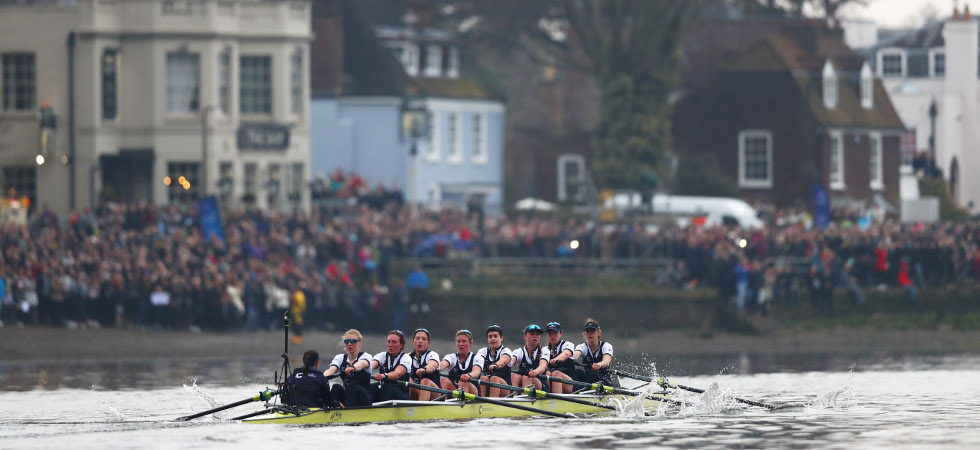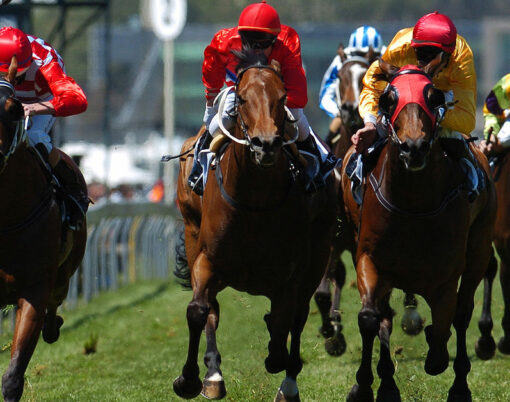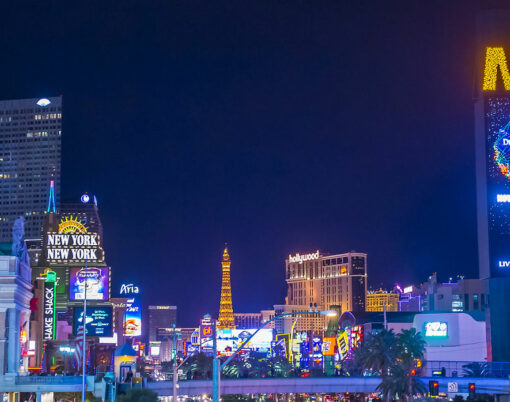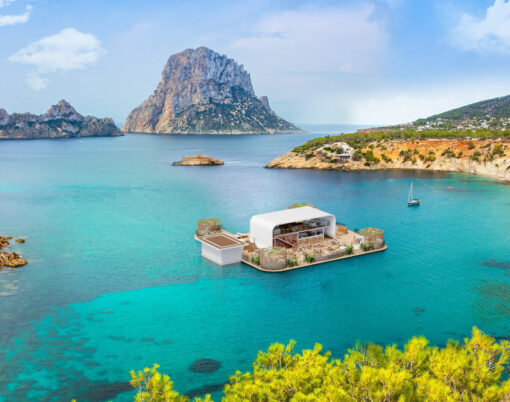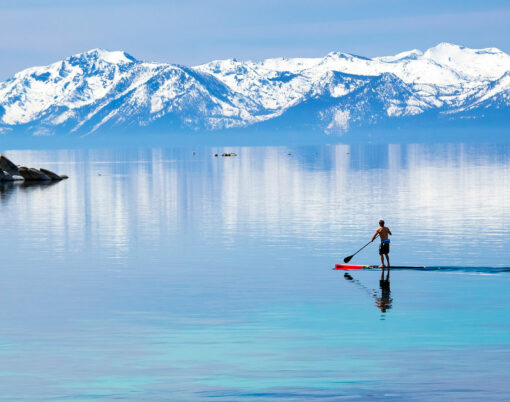What connects 4 miles, 374 yards or 6.8km to 16 minutes and 19 seconds? Answer – The Oxford and Cambridge Boat Race. That’s the fastest time in which the famous Putney to Mortlake rowing race between the UK’s two greatest university institutions has been won. It was achieved by the Cambridge University men’s crew in 1998. The fastest women’s race was achieved by the Oxford University crew in 2015 at 19 minutes and 45 seconds.
The Boat Race course, known as The Championship Course, has been used for the race since 1845, except for 1846, 1856 and 1863, when the race was held in the opposite direction between Mortlake and Putney. The Boat Race is rowed upstream, but is timed to start on the incoming “flood” tide. The Men’s Boat Race is an hour and a half before high tide, with the Women’s Boat Race, since 2005 now held on the same day, a further hour before so that the crews are rowing with the fastest possible current. The ‘University Boat Race Stone’, set into the towpath on Putney Embankment, marks the race start and an equivalent stone set into the bank at Mortlake, registers the finish of the race.
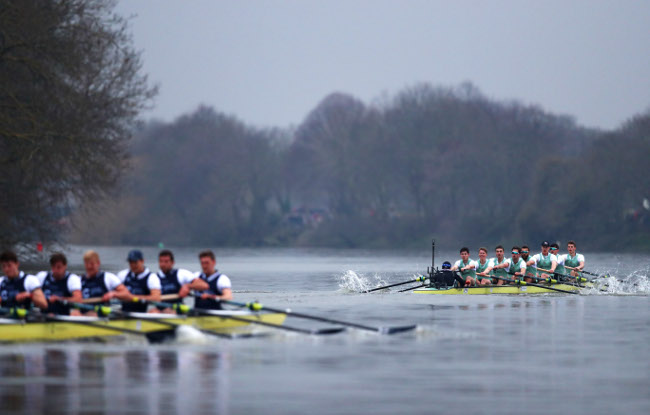
The Oxford and Cambridge Boat Race is now a firm annual fixture in the British sporting calendar, attracting thousands of spectators to the banks of the Thames each year. It is estimated that around 250,000 spectators follow the event live, with a further 15 million watching on television.
The origins of this British sporting institution can be traced back to 1829. Two friends, who met at Harrow School – Charles Wordsworth of Christ Church College, Oxford, and Charles Merrivale of St. John’s, Cambridge, decided to set up a challenge. Their proposal resulted in a meeting of the Cambridge University Boat Club who agreed to write to their Oxford counterparts stating ‘that the University of Cambridge hereby challenge the University of Oxford to row a match at or near London, each in an eight-oared boat during the ensuing Easter vacation.’
On the 10th June 1829 at Henley on Thames, the first race took place with Oxford claiming an easy victory. For the next 25 years contests only happened on an irregular basis, moving to London for the second race in 1836. The event only became annual from 1856, although breaks occurred during the First and Second World Wars.
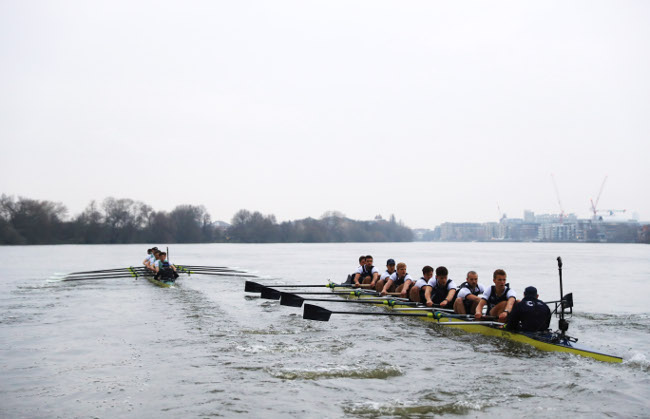
The event is raced for nothing other than the simple glory of victory, but that is enough to engender the fiercest of rivalries and has created an iconic race that isn’t without its controversies.
Following its first defeat in an 11 year run in 1986, Oxford approached the 1987 race with an intense determination to reclaim victory. In an attempt to put together one of the fastest crews that Oxford would have ever fielded, one of the American crew members from the previous year’s losing team recruited several new American post-graduates into the crew, 3 of them international class rowers and one of them a cox. Disagreements ensued between the American recruits, the Oxford President (a Scotsman) and the Oxford coach.
Many in the wider Oxford University Boat Club resented the potential loss of their crew seat through the influx of the new Americans. Eventually all 5 Americans were dropped and replaced by members of Oxford’s reserve crew, Isis. Despite the in-fighting, Oxford won by four lengths. The story of that year’s controversy resulted in a book ‘True Blue: The Oxford Boat Race Mutiny’ and a subsequent film. This 1987 incident brought to the fore one of the underlying tensions that has existed over the race – whether the boats are filled with top class rowers, brought in specially for only that purpose and granted entry to the universities, but who otherwise would not have achieved entry on their academic merit.
However, both universities are clear on this subject. All student athletes in both Universities must meet the academic requirements of the University. They must also commit to remaining students until the end of the academic year in which they have raced, a rule implemented following the 2007 race when the German Cambridge stroke man immediately left his studies following victory and returned to his national rowing squad, negating his student status. Cambridge denied him his sporting ‘blue’, Oxford complained, although the race result stood.
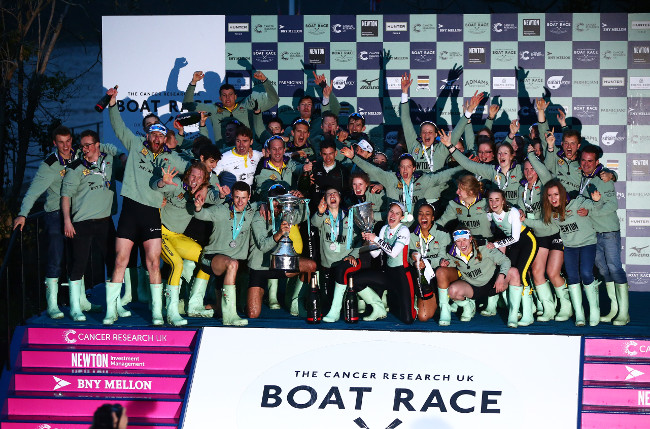
Controversy of another nature occurred in 2012 when after a significant proportion of the race had been rowed, an Australian protester swam between the two crews, resulting in the race being temporarily halted for safety reasons. The race was re-started, the boats clashed, an oar was broken in the Oxford side and an Oxford crew member received emergency treatment after collapsing from exhaustion. All the incidents blighted the race and the award ceremony was cancelled. It was the first time since 1849 that a crew won without an official recorded winning time.
As of 2017, Cambridge lead the overall Boat Race competition with 83 victories to Oxford’s 80. There has however been one ‘dead heat’, in 1877, when the race judge ‘Honest John Phelps’ concluded that the crews were inseparable on the finish line, despite Oxford’s claim that it won by several feet. Rumours were spread that the judge had been asleep at the decisive moment, but with no aligned finish post in that era and of course, none of the television camera scrutiny that would be available today, the race was simply too close to call and the fairest option was to declare the dead heat result.
In 1912, both crews sank. Bad weather and high winds caused problems for both crews. Oxford took an early lead, but also took on water. They made for the bank shortly after passing Hammersmith Bridge and attempted to empty the boat out and restart. However, the race was abandoned as the Cambridge boat had also sunk while passing the Harrods Depository. A re-row took place 2 days later. Leaving 1912 aside, Cambridge wins by a 3 to 2 margin in terms of number of times boats have sunk, succumbing in 1859, 1978 and 1984. Oxford sank in 1925 and 1951.
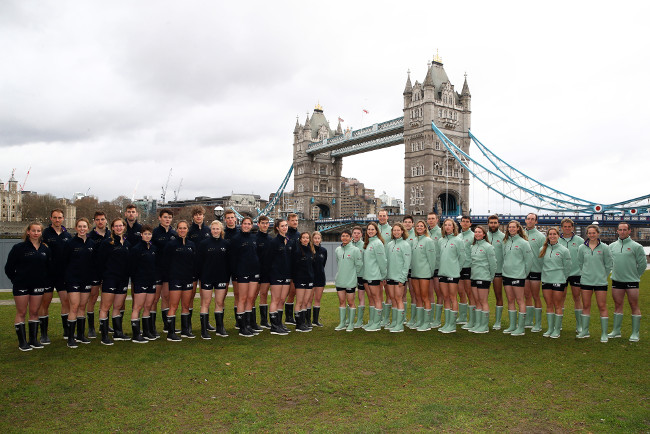
It wasn’t until nearly a hundred years after the first race that the event began to include a Women’s Race. The Women’s Boat Race was founded in 1927 but only raced intermittently until the mid-1960’s. The first Women’s Boat Race was held on the Isis in Oxford. In 2015, the Women’s Race began being held on the same day as the Men’s Race. Cambridge University have a dominant lead in overall Women’s Boat Race results, with 43 wins secured currently to Oxford’s 30.
2019’s Boat Races will take place on Saturday 7th April. As always, many will watch with eager anticipation to see this great traditional annual battle between these two universities. I’ll be cheering for my old alma mater, who in the history of this sporting institution is still several lengths ahead – Cambridge leads in overall wins in the Women’s Race, as well as overall wins in the Men’s Race, where they also hold the record for the longest consistent winning stretch (13 consecutive years from 1924 to 1936) and the record for the largest margin of victory – 20 lengths in 1900 on The Championships Course. Here’s to another year of drama and excitement.
Image at the very top of the article credit: Getty Images for The Boat Race Company












